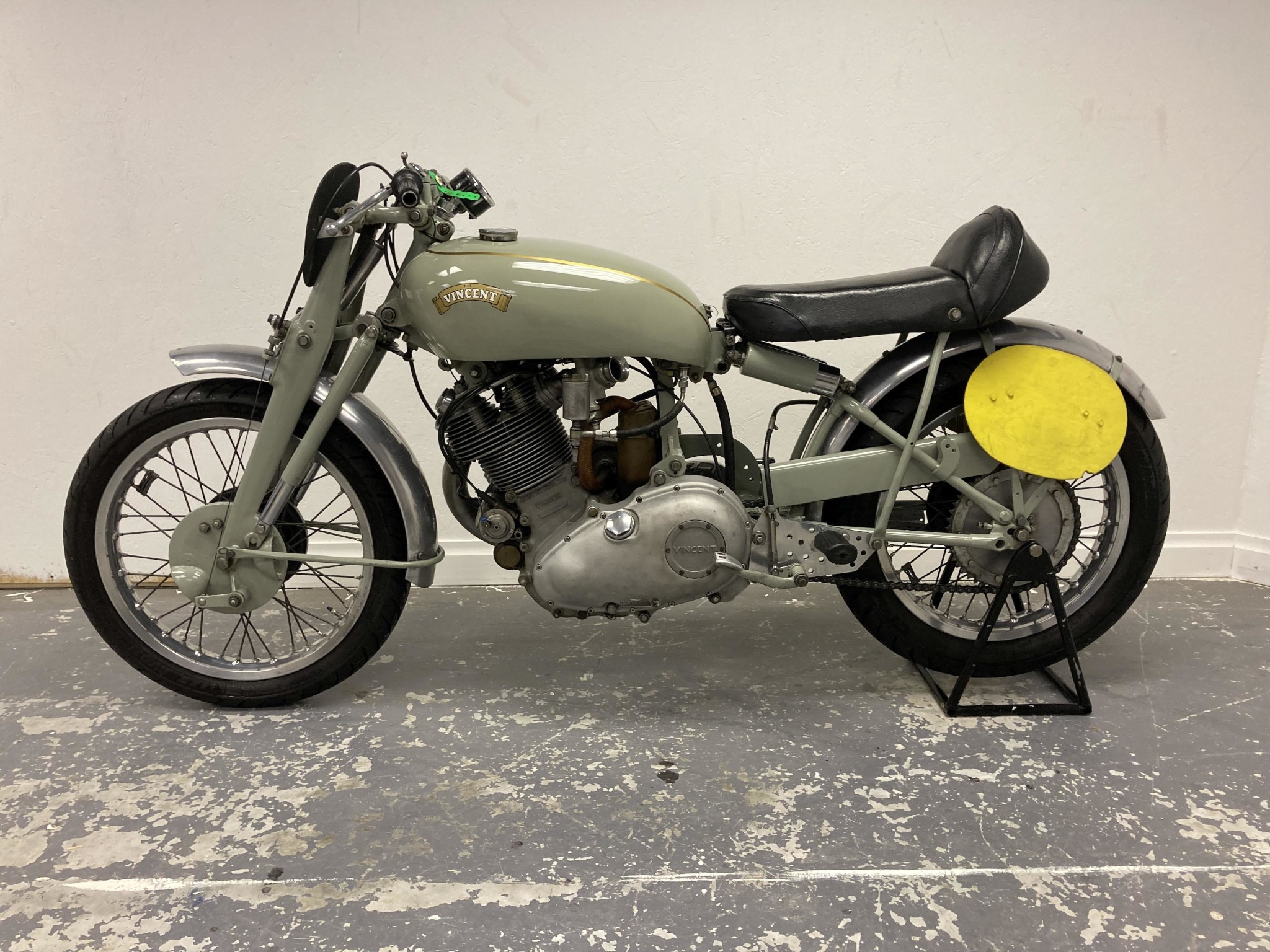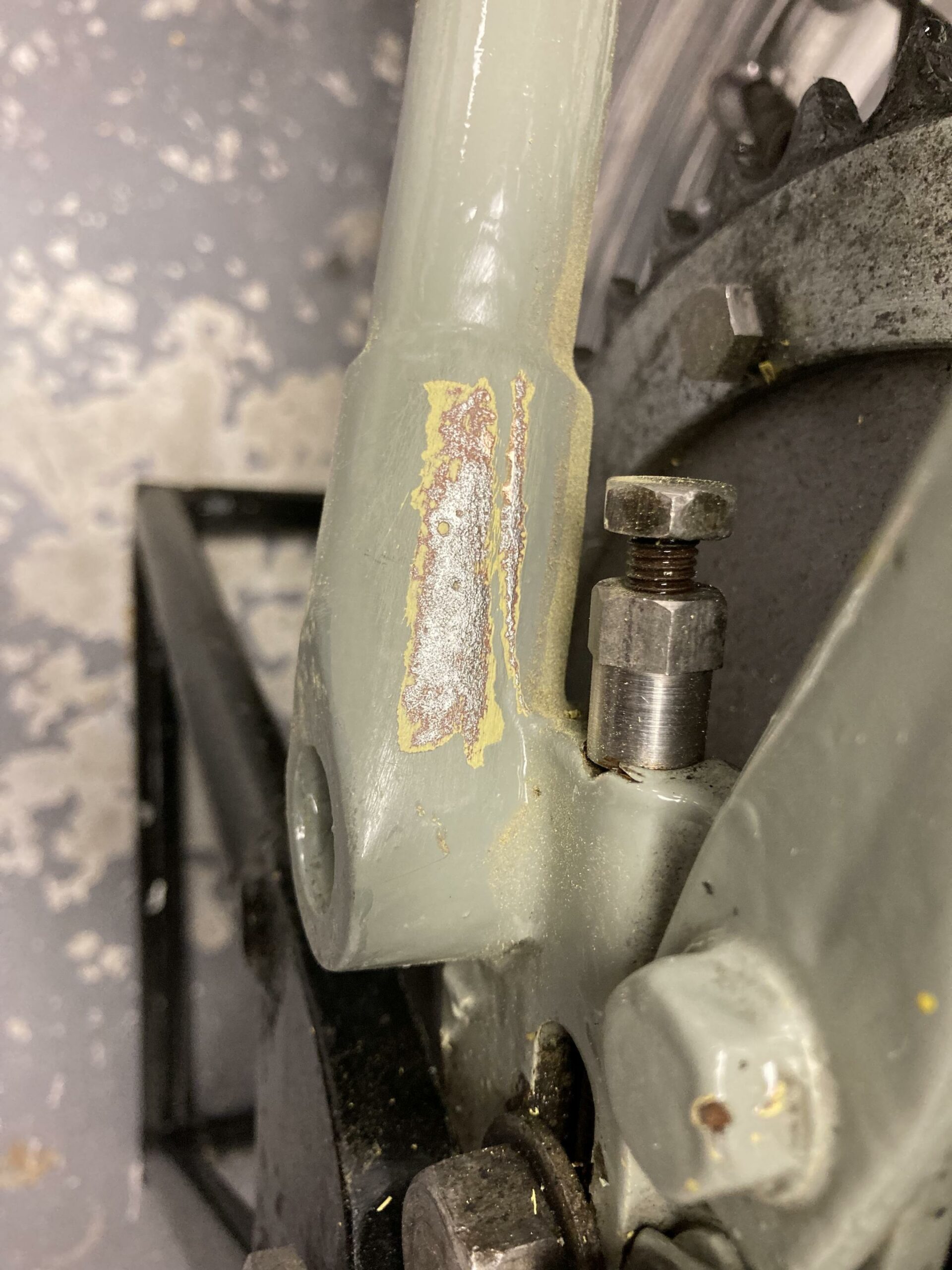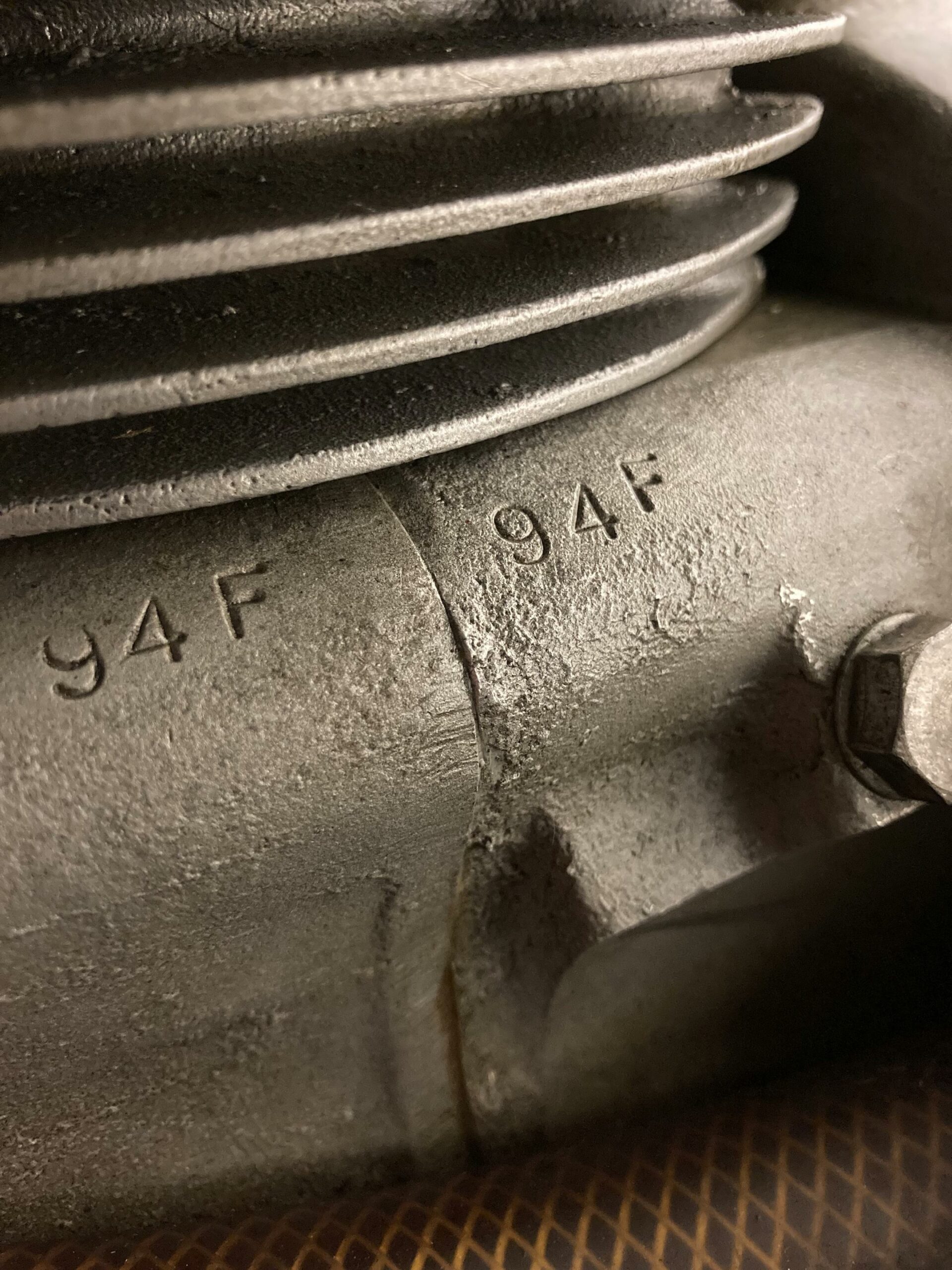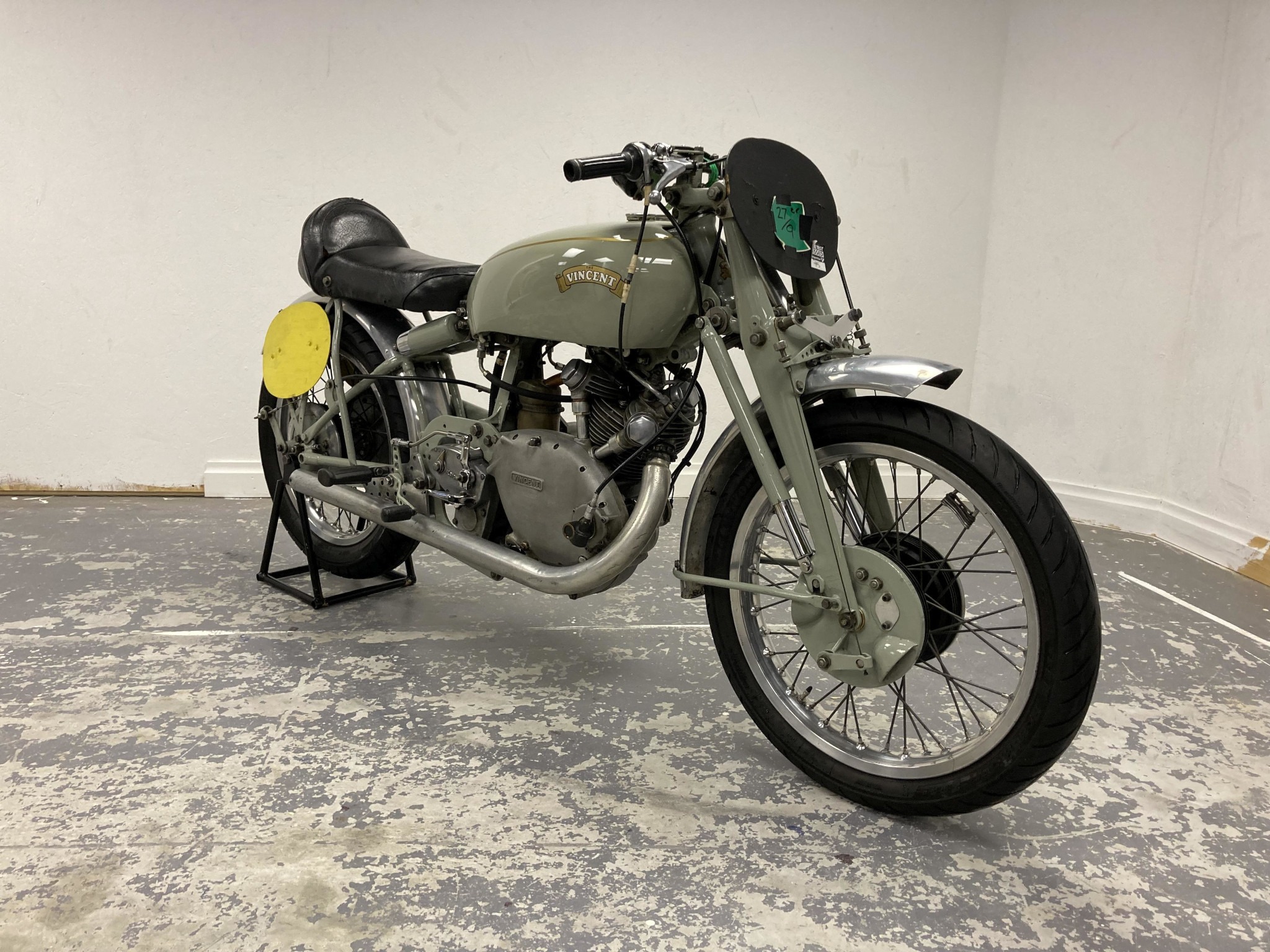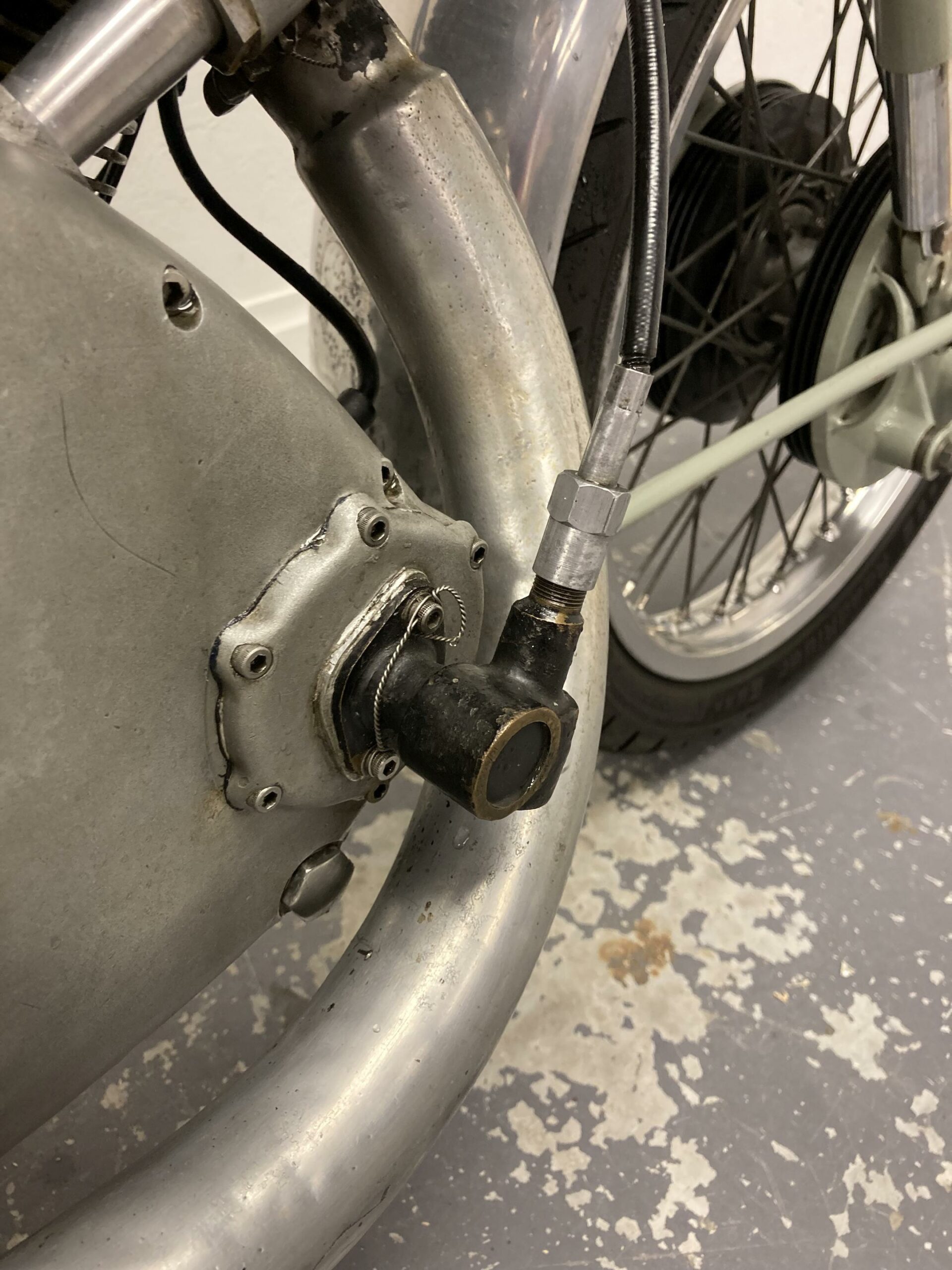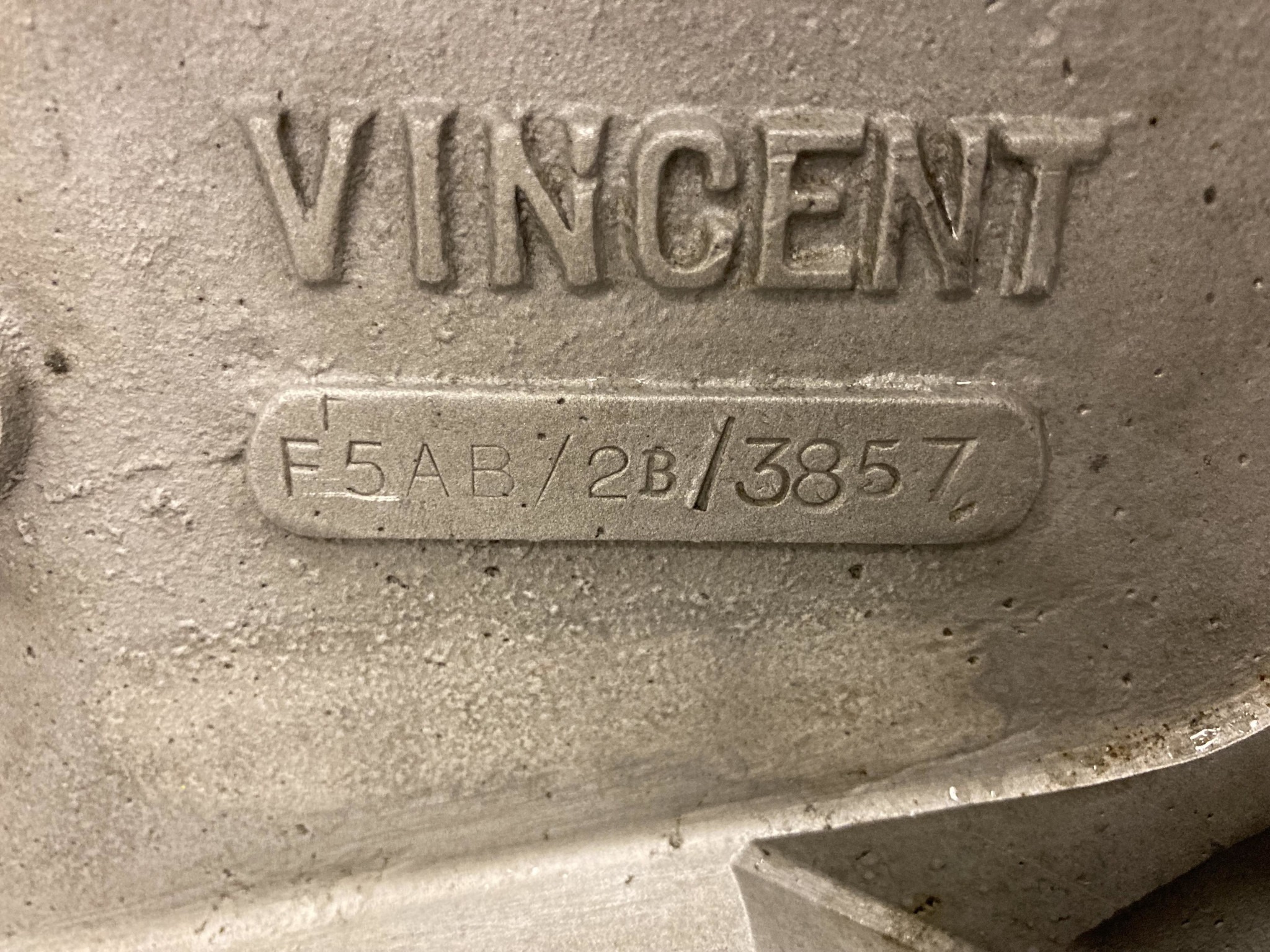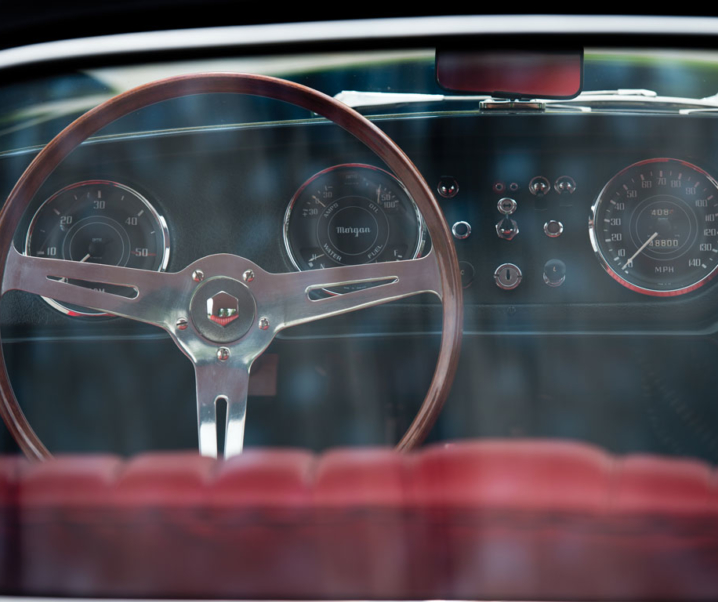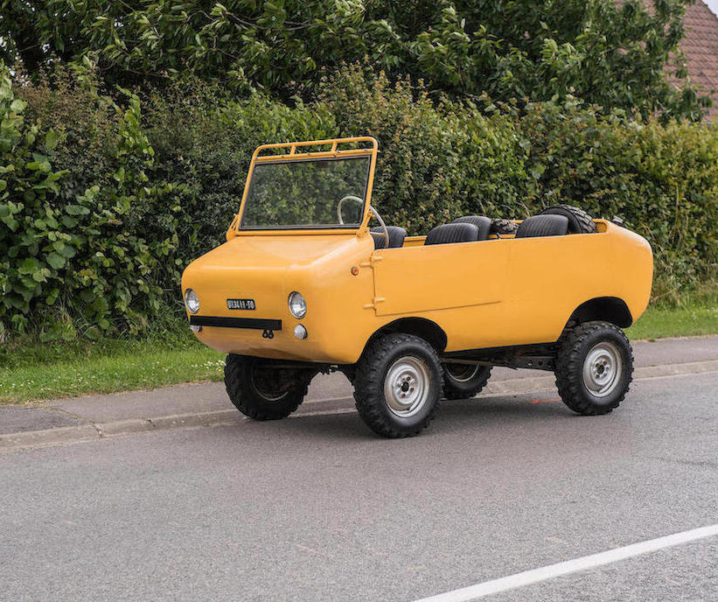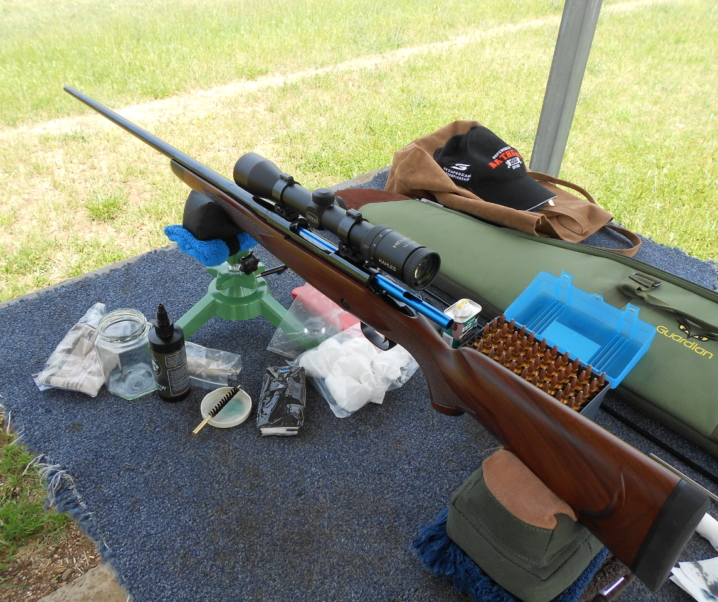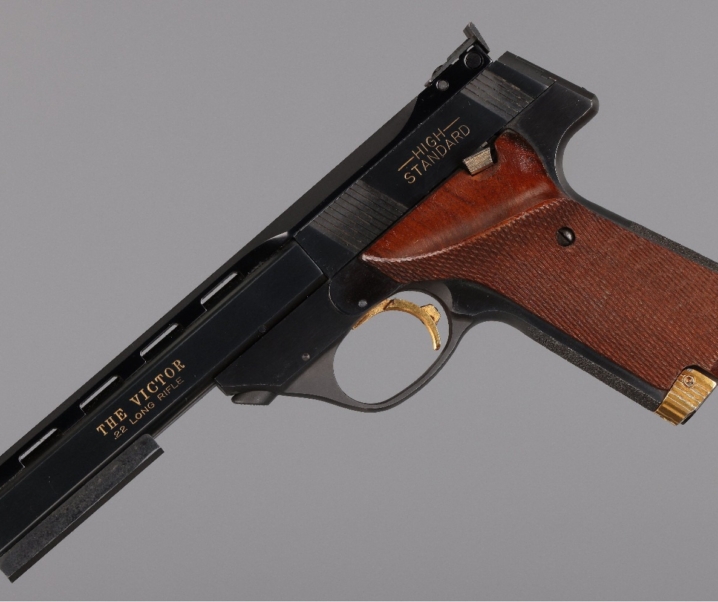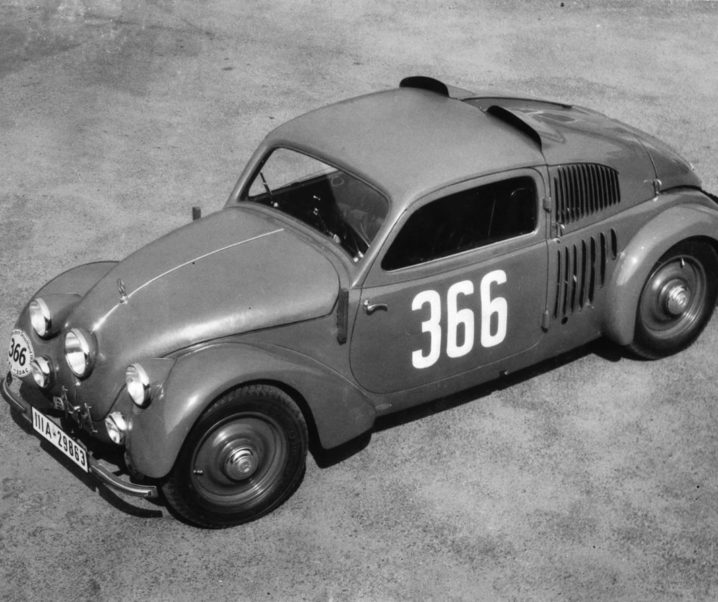Whilst “Vincent Grey Flash” sounds like it should be the name of a very British Super Hero with superpowers it was in fact the name of a very British motorcycle that indeed possessed super power from its 499cc single cylinder OHV engine, and phenomenal handling from its frame and suspension which were ahead of their time.
The Vincent Grey Flash remains one of the rarest of all the motorcycles made by British maker Vincent HRD. Among its claims to fame is that it was a motorcycle on which a young Vincent apprentice began his racing career that would see him win a motorcycle world championship, and a Formula One World Championship. The name of that young apprentice was John Surtees.
Fast Facts
- The Vincent Grey Flash was created as a 500cc racing class single cylinder motorcycle: it was effectively a single cylinder sibling to the 998cc V-twin Black Lightning.
- The Grey Flash and the Black Lightning shared quite a few parts and both made strategic use of magnesium alloy “Elektron” parts.
- The Grey Flash was an expensive motorcycle, being about double the price of its nearest competitors.
- A high price might have been acceptable had the Grey Flash run up some significant racing successes, but although it delivered very good performance and handling it could not obtain an Isle of Man TT victory.
- The Grey Flash did achieve some notable victories racing on the British mainland at the hands of a young Vincent apprentice named John Surtees, who would go on to win world championships both on motorcycles and in Formula One.
- A Vincent Grey Flash is coming up for sale at the Spring Stafford Sale to be held by Bonhams. This will take place at International Classic Motorcycle Show, Stafford, Staffordshire County Showground, on 21st April 2024 at 10:30am BST
The Vincent Grey Flash is perhaps the least known motorcycle to come out of the factory of Vincent HRD. Estimates vary as to how many Grey Flash motorcycles Vincent made, but the best guess is around thirty.

The Grey Flash is undoubtedly rare, I think, because it was overshadowed by the V-twin Black Shadow and Black Lightning. It was fitted with a single cylinder 499cc engine and was based on the Vincent Comet C: its raison d’etre was to be a racing motorcycle in the 500cc class.
That being said the Grey Flash was offered in full racing configuration, a mixed race/road version, and a full road version. With each bike being custom specified for each customer order there are many variants, and the owners were also likely to have done some tweaking of their own, so these bikes can exhibit quite a bit of individuality.
The official production period only spanned eight months from 1949 into 1950, although it has been found that there was at least one order on factory records from 1952, so intermittent actual production quite possibly extended for about two and a half years.
The engine that would power the Grey Flash was designed by Phil Irving after he joined Vincent in 1934. It was a 499cc single OHV producing 26hp @ 5,300rpm and it was the heart of the Vincent Meteor motorcycle.
The Meteor single would be improved on to power the Vincent Comet, and would be the foundation on which the 998cc Vincent V-twin would be based, almost literally by joining two 499cc singles together to create the iconic Vincent V-twin.
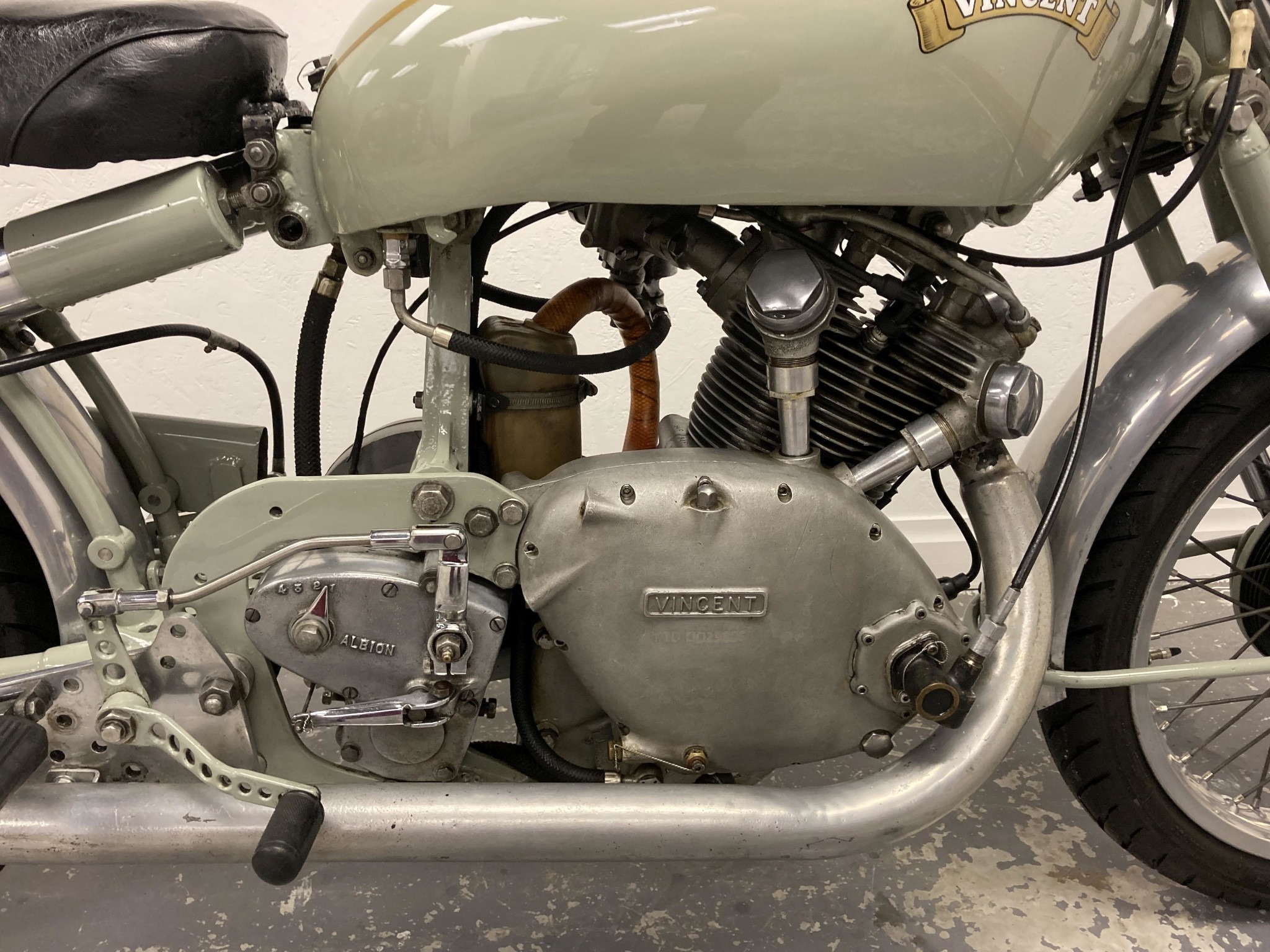
The idea behind the creation of the Grey Flash was to build a lightweight 500cc class motorcycle that was agile, yet fast. So to achieve this Vincent designer Phil Irving worked on reducing the weight of his Comet C while boosting the power of his original single cylinder Vincent 499cc engine.
The Vincent Comet entered production in 1948. Its single cylinder engine was half of the 998cc V-twin used in the Vincent Rapide, Black Shadow, and Black Lightning. This was an OHV design but Phil Irving located the camshaft as high as practicable in order to keep the length of the pushrods short. This allowed the pushrods to be kept light yet strong which was a feature that helped the engine achieve high rpm, and optimized reliability.
Phil Irving’s OHV system was meticulously thought out. The push-rods were fitted with upper and lower guides to maximize support and minimize the potential for failure under the stresses of racing. The rockers were forked to fit around the valve stem and acted, not on the top of the valve, but on a shoulder on the stem. This design feature distributed the pressures of forcing the valve down on two sides of the valve stem providing balance and support superior to the conventional method of having the rocker press directly on the top of the valve.
In its original specification the Vincent Comet single had a 6.8:1 compression ratio and the engine produced 28hp at 5,800rpm.
In looking at this we should remember that 1948 was only three years after the end of the Second World War and in Britain rationing was still in force, and petrol/gasoline was the “pool petrol” and was not of the high octane level to allow a high compression engine.
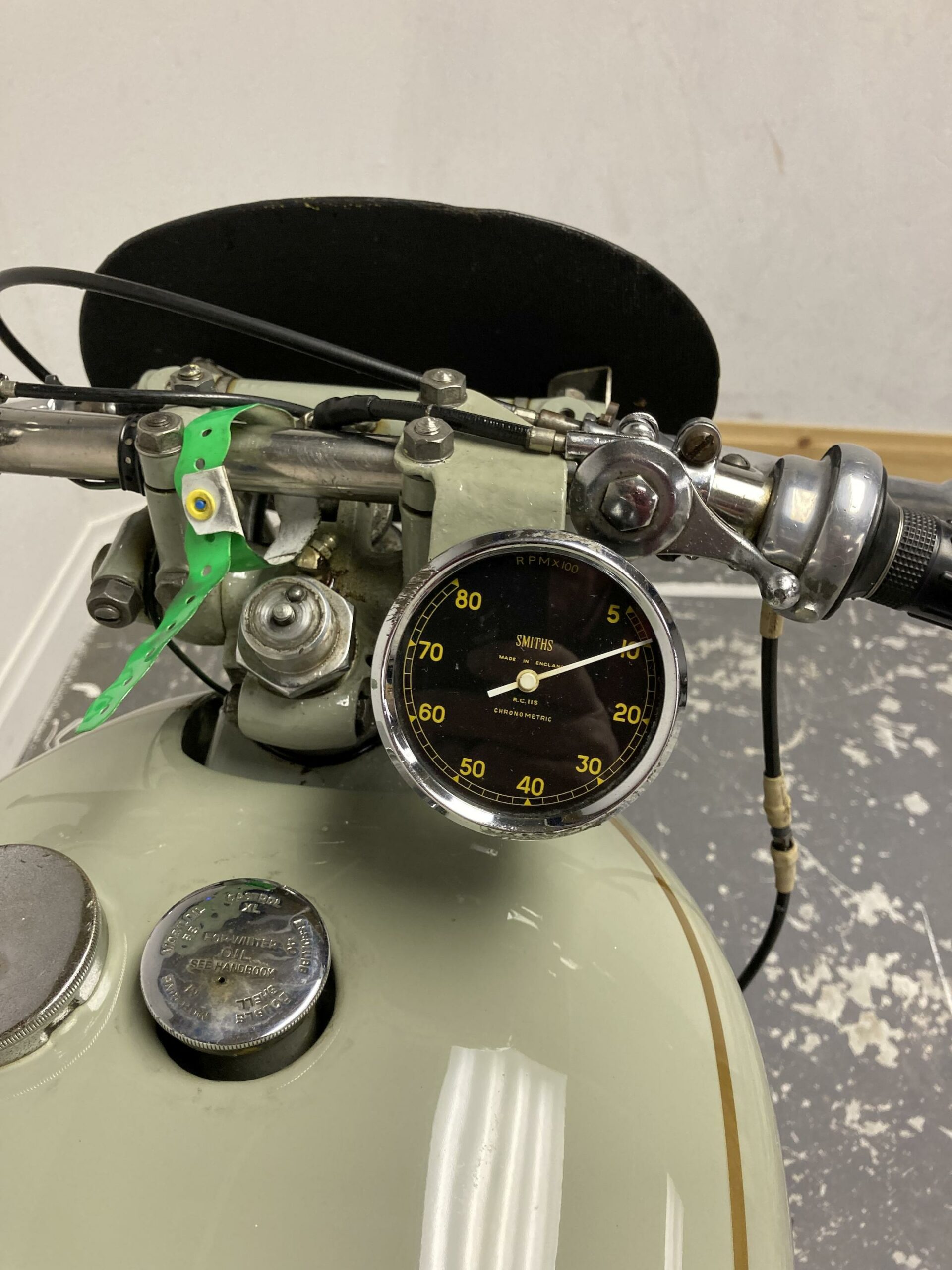
That original Comet engine used a single Amal 276 carburettor, a Lucas KIF magneto and 50 watt Miller generator. The series C Comet used a conventional wet multi-plate clutch and a Burman BAP four-speed gearbox.
To create the high-performance Grey Flash Phil Irving based his engine improvements on the Black Lightning engine. The carburetor was a 32mm Amal TT, the camshaft a high-lift Mark II specification.
The cylinder head boasted large valves with triple valve springs, ports were polished and opened up, and the con-rods were also polished.
Compression ratio was raised to 8:1 and the result of this judicious tweaking was a power output of 35hp @ 6,200rpm. By comparison the 998cc Vincent Black Shadow V-twin delivered 55hp.
The chassis of the Grey Flash was an improved Vincent Comet C. This chassis featured use of the engine as a stressed member, rear cantilever monoshock, and at the front the unique Vincent Girdraulic forks system which provided great rigidity.
These Girdraulic forks were customized specifically for the Grey Flash and had some magnesium alloy “Elektron” components as used in the Black Lightning. The fork legs were extensively milled and quite different to those used on the Lightning.
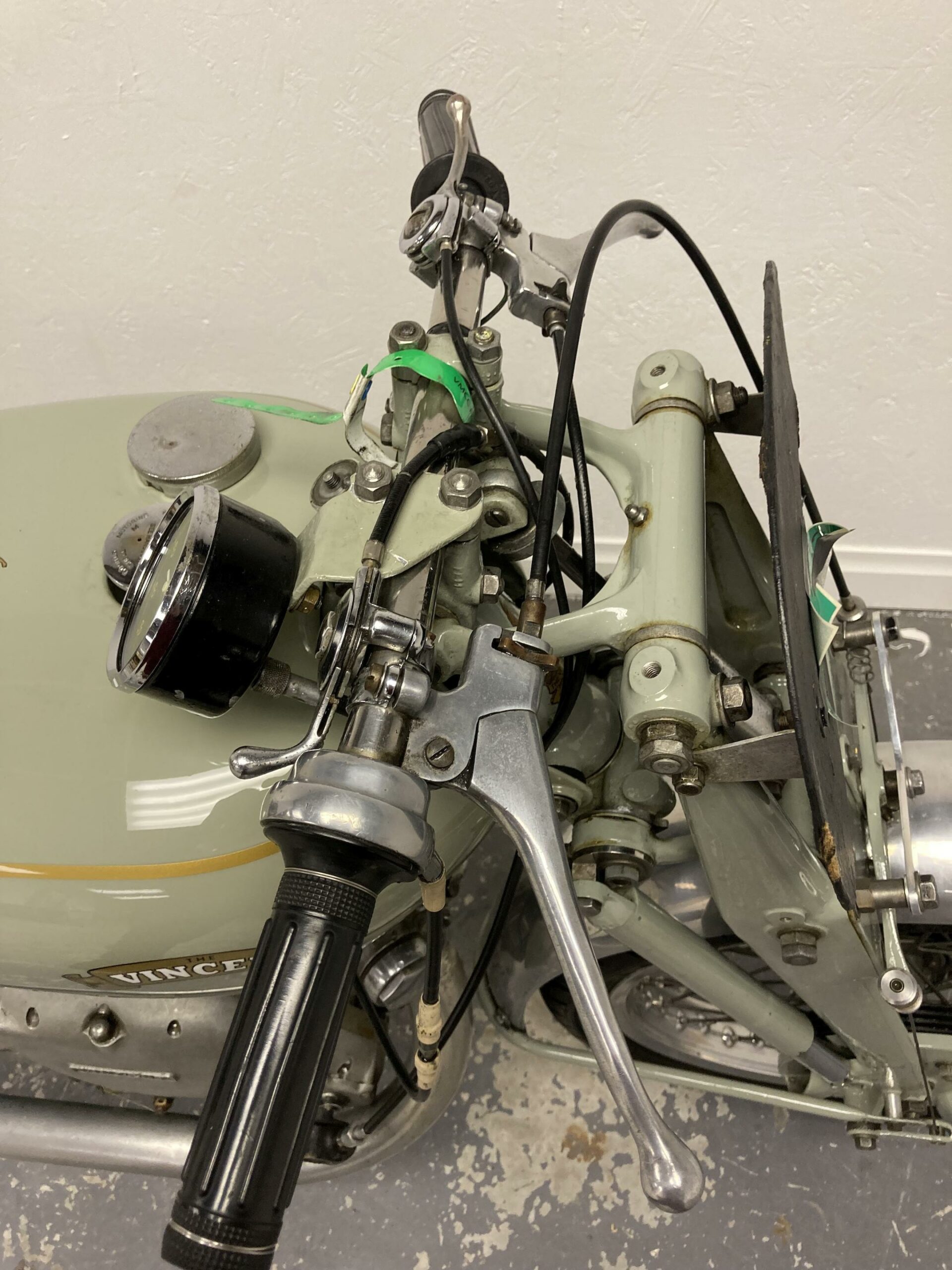
The wheels were light alloy and the brakes used magnesium alloy Elektron brake plates, as used in the Lightning.
The first Grey Flash made was fitted with a dull chrome fuel tank while the remainder had grey painted tanks. That bike was made for motorcycle racer George Brown, who spent some time working for Vincent heading up their experimental department and racing their motorcycles.
Brown’s Grey Flash was fitted with a Burman BAR gearbox, the one he personally preferred.
It appears that at least one Grey Flash was fitted with an AJS 7R gearbox but the vast majority of Grey Flash bikes were fitted with Albion gearboxes: the No. 5 (which has no kick-start and was specifically for racing bikes) and No. 16 (which had a kick-start) being most common, and the No. 20 being least common.
These Albion gearboxes could be ordered with either aluminium or magnesium alloy covers, with the magnesium being significantly lighter.
In racing trim the dry weight of the Grey Flash was 150kg (330.7lb).
Ruggedly sophisticated though it was the Vincent Grey Flash proved to be mostly unable to defeat Vincent’s rival, Norton, and their Manx Norton which featured the company’s signature “featherbed” frame and OHC engine.
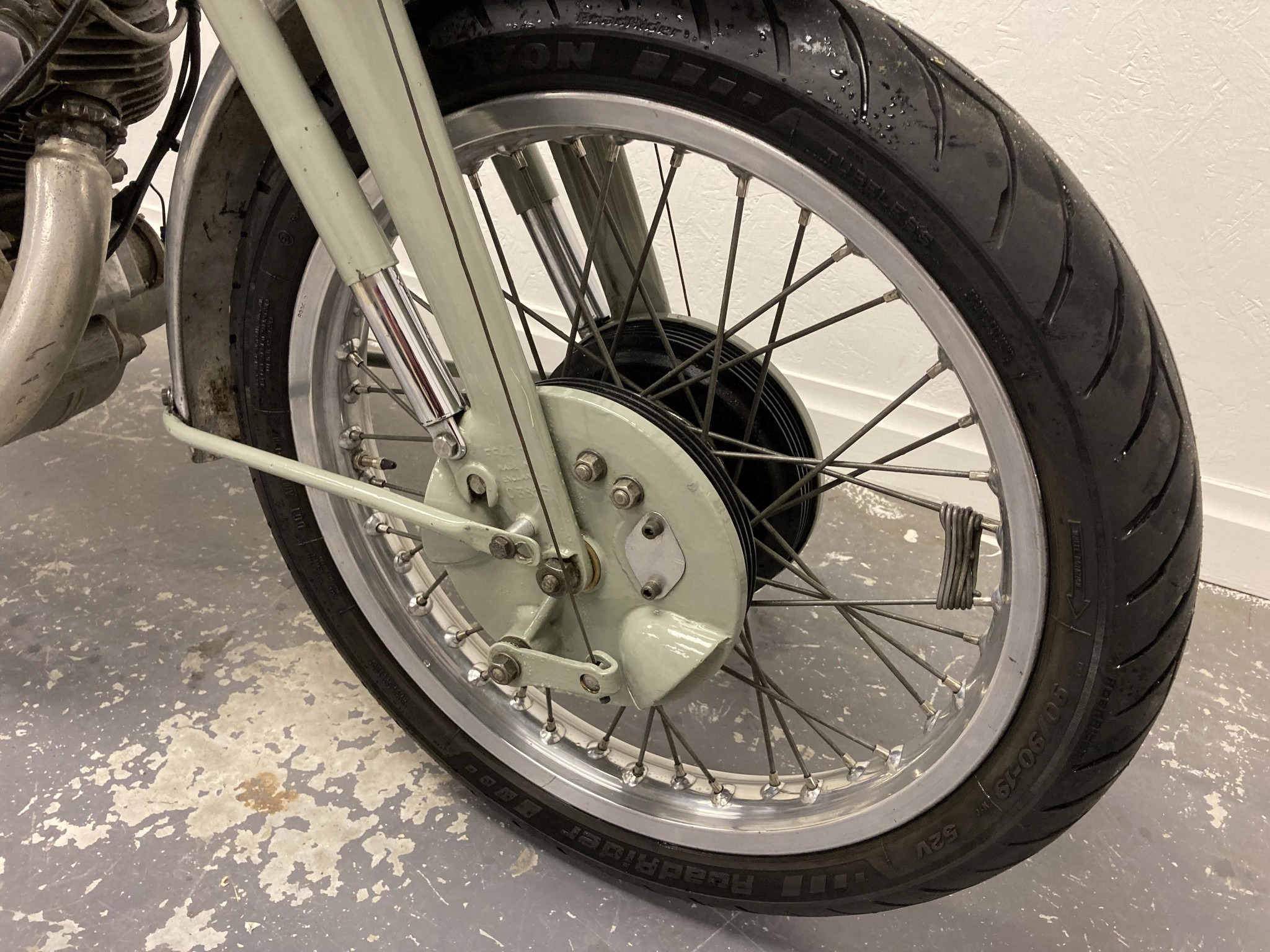
The only rider who it seems was able to match and defeat the Manx Norton was a teenage apprentice at Vincent named John Surtees who managed a number of wins up against the Nortons. That being said Surtees eventually traded his Grey Flash for a Norton as he built his racing career both on two wheels and in Formula One.
A Vincent Grey Flash for Sale
One of these very rare Vincent Grey Flash motorcycles is coming up for sale by Bonhams at their Spring Stafford Sale, which will be held at the International Classic Motorcycle Show, Stafford, Staffordshire County Showground, on 21st April 2024 at 10:30am BST.
You will find the sale page for this motorcycle if you click here.
The Vincent Grey Flash has the distinction of being one of the rarest of all the Vincent motorcycles produced. It is a lightweight, agile and quick machine, said to be capable of a top speed around 115mph, and given its specifications I would have no doubt about that claim.
It might just prove to be one of the most satisfying of all the Vincents to own and ride.
Picture Credits: All pictures courtesy Bonhams

Jon Branch is the founder and senior editor of Revivaler and has written a significant number of articles for various publications including official Buying Guides for eBay, classic car articles for Hagerty, magazine articles for both the Australian Shooters Journal and the Australian Shooter, and he’s a long time contributor to Silodrome.
Jon has done radio, television, magazine and newspaper interviews on various issues, and has traveled extensively, having lived in Britain, Australia, China and Hong Kong. His travels have taken him to Indonesia, Israel, Italy, Japan and a number of other countries. He has studied the Japanese sword arts and has a long history of involvement in the shooting sports, which has included authoring submissions to government on various firearms related issues and assisting in the design and establishment of shooting ranges.


